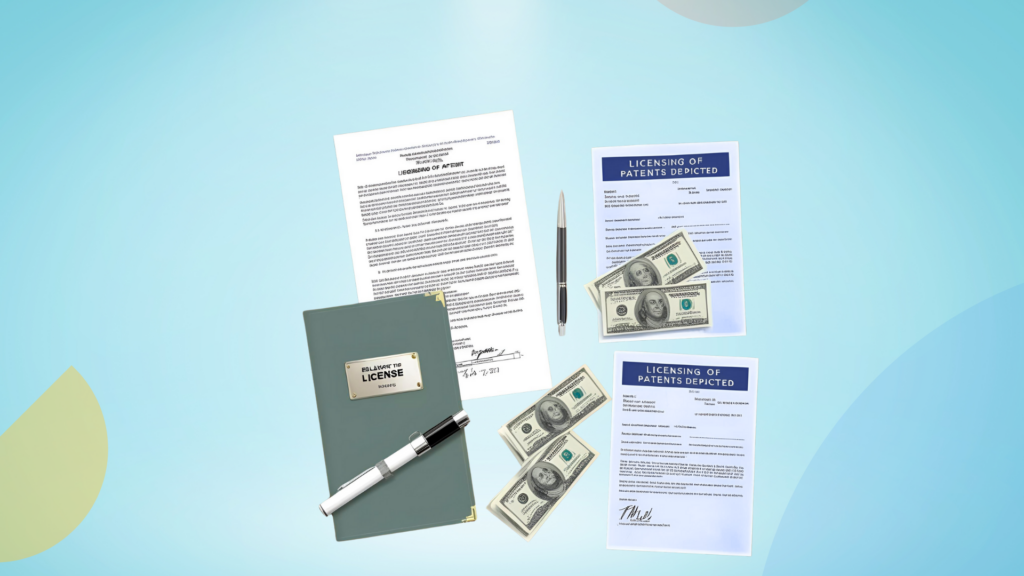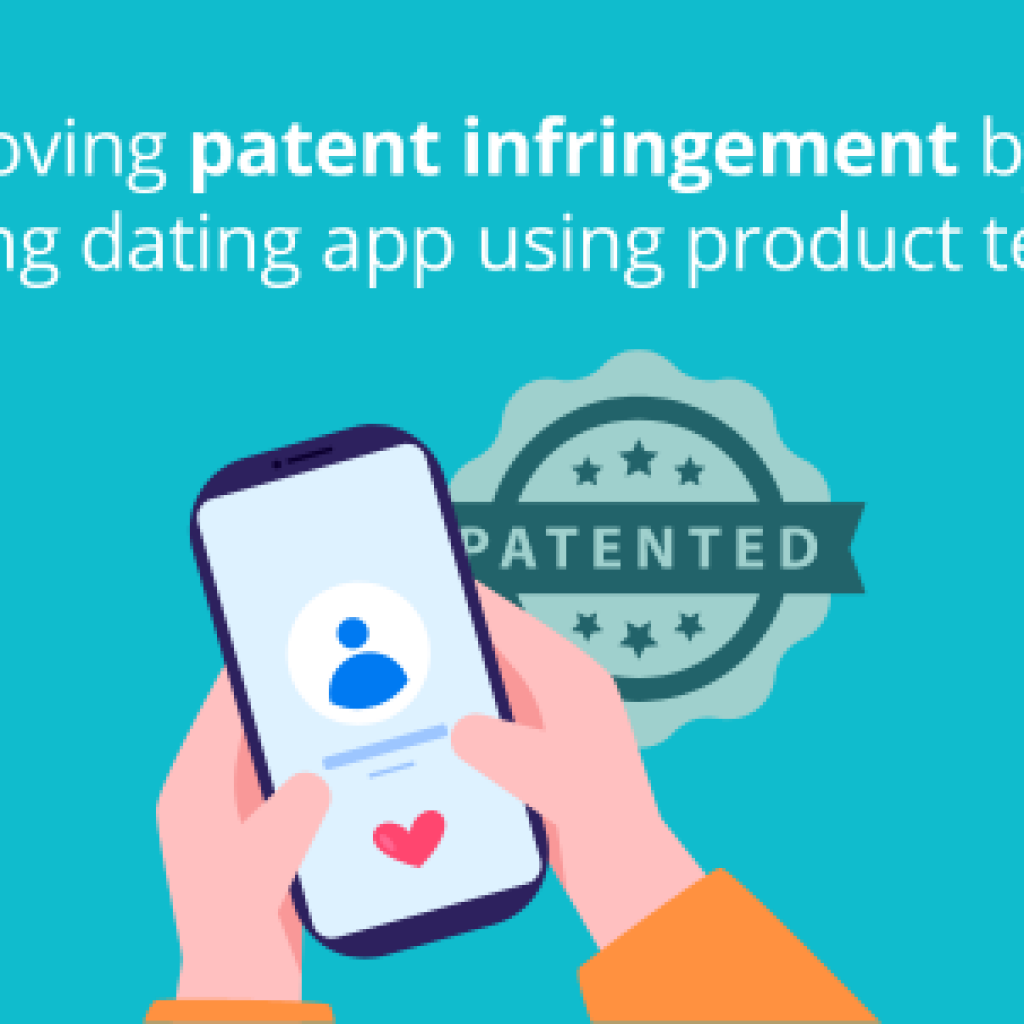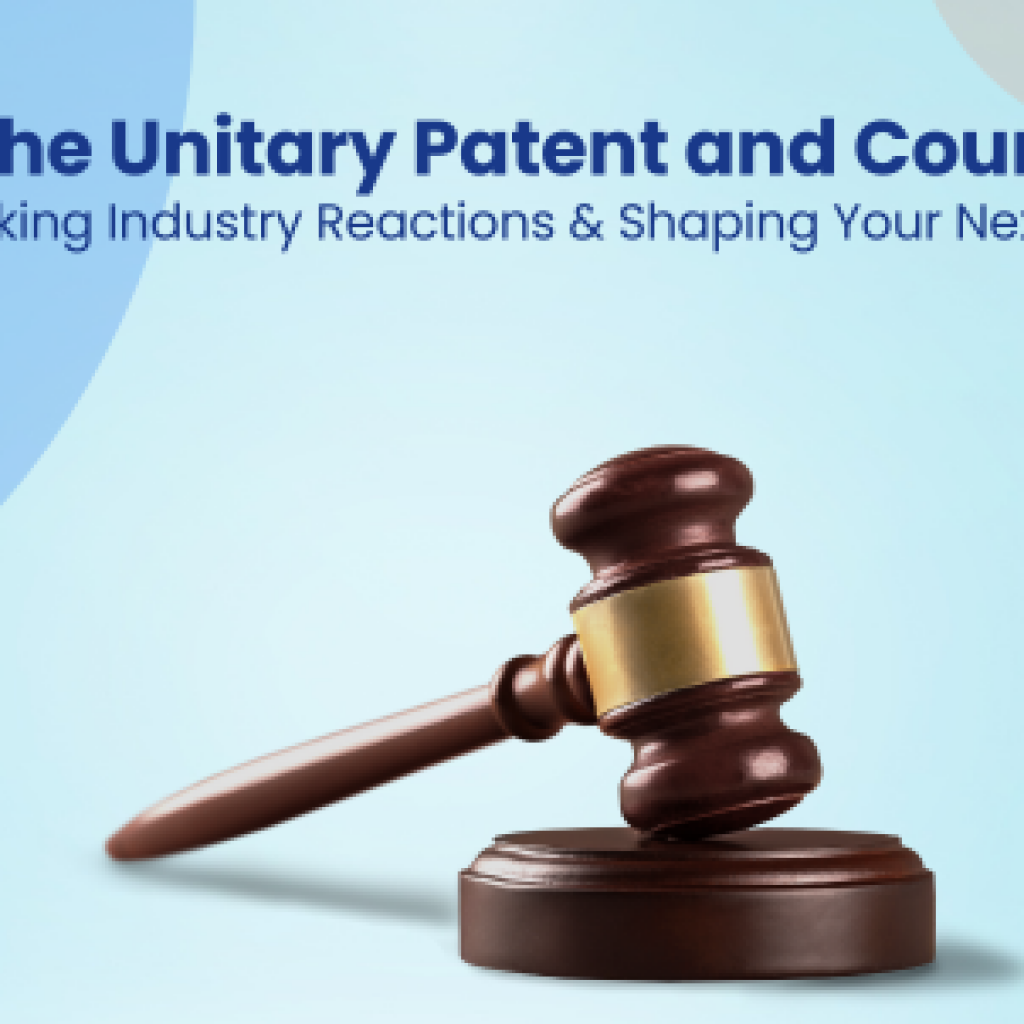Someone not so famous once said — If something helps you get better, leverage it. The “it” varies from person to person, based on needs and priorities. One such “it” could be insights derived from the data for IP counsel.
Yes, you read that right. Insights from data can help you get better at what you do. Be it prosecution, litigation, maintenance, or strategy creation, no matter what the task, leveraging different forms of data for every phase can reap great results.
Talking specifically about the prosecution phase of a patent, there are a few performance indicators that, if analyzed, can give an IP Counsel (i.e., you) an overview of the changes that should be made to the filing practice to reap benefits.
Wondering what those indicators are?
You are about to find out, albeit with the help of a practical example.
Qualcomm vs. Ericsson — patent prosecution statistics
We analyzed patent prosecution statistics of two communication companies — Qualcomm and Ericsson. We portrayed those statistics in the form of a chart to help you better understand these indicators and how you can utilize these resources to efficiently manage the patent prosecution phase for your client’s patents.
Prosecution strength
The prosecution strength indicates how a patent fares during office actions. The factor that plays a vital role in determining the prosecution strength of a patent is the number of rejections that an application has to face before getting granted.
Additionally, the number of modifications made to claims to pass the patentability criteria also helps determine the changes that should be made in prosecution activity.
For instance, the chart below shows that Qualcomm’s prosecution strength has improved significantly over time and is way better than Ericsson’s.
Ericsson’s prosecution strength is nearly constant and has not shown much improvement, which should concern the company’s IP attorneys.
On a deeper analysis, we found that Ericsson has nearly doubled Qualcomm’s rejection rate.
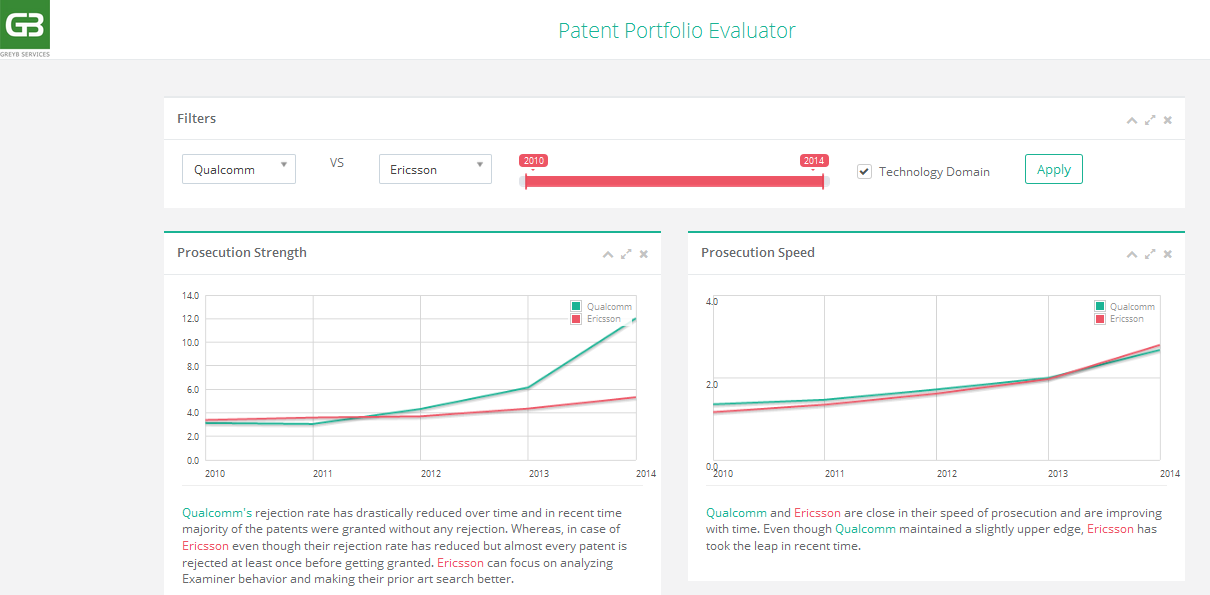
So, what is the pain point here?
The way these patents are drafted.
Let us have a brief look to see if that’s precisely the case.
The Depth of Prior Art
A deep analysis of the prosecution activity hints that Ericsson is filing patents without deeply exploring available prior art when compared to Qualcomm. The depth of prior art indicated in the chart proves the fact.
According to analysis, Ericsson has improved their depth of prior art search in the past few years; however, it still has much to cover to reach the level of Qualcomm.
If the IP counsel of Ericsson had spent time and money on studying existing prior art as Qualcomm did, its grant-to-rejection ratio would have been far less, leading to a better prosecution strength and, in turn, saving more time and money in prosecution activity.
Related Read: How can Patent Examiner Analytics save you time and money?
Also, if you were wondering what depth of prior art stands for, here’s a definition:
“The depth of prior art statistically reveals the number of rejections of an application based on prior art located by an examiner. It is also a strong indicator of the lack of search done by an organization before applying.”
Relevant Strategy to explore: How can this tool help you craft a smart patent prosecution strategy?
Claim strength
Just when we were about to conclude that most of Ericsson’s rejections were because of a lack of a proper prior art search, the claim strength analysis proved our first assumption correct.
Ericsson indeed filed broad claims, causing a spike in the number of rejections. Though it was just a speculation, such theories could be proved right or rejected based on the statistics. It solves one problem – It eliminates the hypothesis formed to explain certain situations.
There’s no more – “This might be the case.”
It can now easily be replaced by – “That’s exactly what happened!”
The good news for Ericsson is that the analysis of claim strength revealed that Ericsson is on the right track. Though its rejection rate is higher than Qualcomm’s, it still got many patents granted after the first or second rejection, and that too with broader claims.
Qualcomm, on the other hand, conducted an in-depth prior art search, faced fewer rejections, and has better claim strength and claim scope than Ericsson.
Which company do you think is on the right track?
I would allow you to guess the answer.
Editor’s Note: We performed an in-depth analysis of Qualcomm’s patent portfolio using one of our tools (Litigation Predictor). Wonder what we found? Read it all here: Which are the most valuable patents of Qualcomm’s patent portfolio?
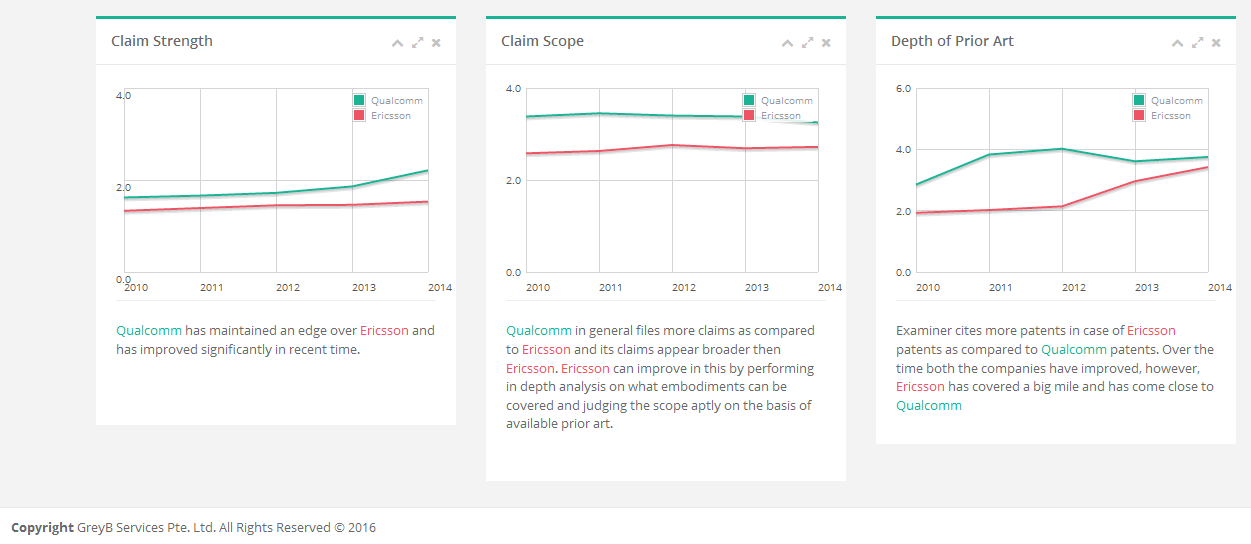
Claim Scope
If you couldn’t answer the above question, let us look at another indicator that would help you decide which company is indeed on the right track.
A look at the claim scope analysis reveals that Ericsson’s claim scope ratio is poor compared to Qualcomm’s.
What does it mean?
It means that after conducting an in-depth prior art search, Qualcomm drafted claims covering the invention with just the correct number of independent claims, which were the right size broad, to protect its core inventions.
On the other hand, Ericsson lacked an in-depth prior art search, which affected the scope of its claims. Though it filed broad patents that were eventually granted, the claim construction proved a problem.
If Ericsson wants to step up its game, the right move would be to conduct in-depth prior art searches and draft claims after considering the available prior art.
In that way, not only would the company recognize the whitespaces with scope for innovation and patenting activity, it would also reduce the time taken to grant a patent, thus saving time and money.
Prosecution Speed
Talking about time, let’s look at our fifth indicator, “Prosecution speed,” which, concisely, is the time taken on average for the issuance of a patent.
The prosecution speed analysis reveals that Ericsson and Qualcomm are neck-to-neck in terms of prosecution speed.
This means that, on average, it takes around the same amount of time for both companies to issue patents. Interestingly, Ericsson, which lags behind in the race for several other indicators, took a leap and has been maintaining an upper edge in recent times.
So, let’s return to our question — Which company do you think is on the right track?
The answer is indeed Qualcomm. Out of 5 indicators, Qualcomm indeed outperformed in 4 of them. On the other hand, Ericsson has been showing signs of improvement though lags.
The question now is — What could Ericsson do to cross Qualcomm’s level of prosecution?
And why just Qualcomm, to outperform others too, there are some changes that Ericsson need to make.
Other than conducting a deep prior art search and drafting better claims, one potential problem solver in Ericsson’s scenario would be examining the patent examiner’s behavior during office actions. Based on the characteristics of different examiners, different steps could be taken that would improve the chances of getting a patent granted.
Conclusion
Data, as we know it, is abundant. Leveraging its availability is what constitutes wisdom.
IP counsels should leverage the presence of the data and tools so that better decisions can be taken to effectively manage a client’s portfolio, no matter the phase.
Better decisions mean good strategy and good strategy always ensures success in the game.
After all, participation is just consolation. It is winning that really matters!
Continue winning!
Authored by – Anjali Chopra, Research Analyst with the help of insights provided by Shikhar Sahni, AVP, Operations and Mahesh Maan, Senior Research Analyst, Search Team.



